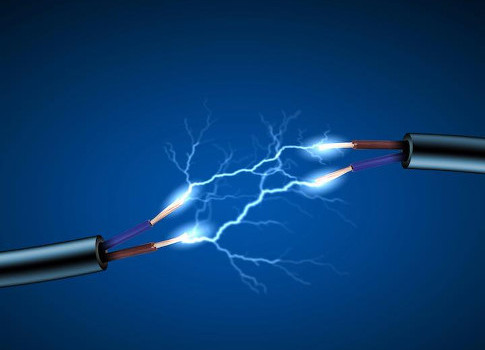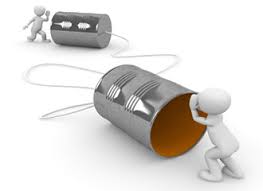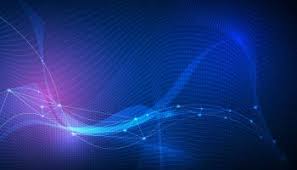TECHNOLOGY FOCUS
Ask almost anyone what they consider noise to be – and you will definitely receive a wide variety of answers. Amongst these answers the perception of “unwanted sounds” will prevail: dogs barking, chainsaws screaming, etc. Of course the great majority of folk will indeed be thinking about “acoustic noise”.
In electronics and telecommunications however noise has a far broader meaning although several fundamental concepts are borrowed from the “acoustic noise” scenario:
“Noise” refers to unwanted electrical disturbances, whilst in contrast;
“Signal” refers to the desired information in electrical form.
Now “noise” may result in poor quality sound, greatly deteriorated TV reception (“snowy” screen and hissing sound) or an unacceptably corrupted digital channel. In all instances it is the task of engineers to design receiving systems that perform to specification – in the presence of the inevitable noise.


COURSE CONTENT
All electronic systems suffer inherently from the existence of unwanted perturbations, known generically as noise.
It is a major design challenge to minimise the effects of noise and this course addresses the issue considering RF (also other related) systems.
WHO SHOULD ATTEND
This course presents an overview, fundamentals, theory and practical aspects relating to noise and its minimization in RF subsystems which will be of interest to:
- engineers and technical staff
- managers and business development personnel
who plan to pursue the minimization of noise in their systems.

Brief summary of the scope of this course:
- Origins of electrical noise;
- RF Systems;
- Overview of some “special” devices and components;
- Signal to noise power ratio (S/N);
- Digitally-modulated systems: Shannon and BER;
- Fundamental noise considerations: Noise power and Noise floor;
- Signal to noise+distortion ratio (‘SINAD’);
- Noise factor and noise figure;
- Equivalent noise temperature Te;
- Minimum Detectable Signal;
- Noise figure for an Attenuator;
- Sources of noise in transistors;
- Phase noise: and the (modified) Leeson formula.
- Frequency dependence of noise figure: ‘real-life’ examples
- Overall noise figure for cascaded blocks
Analytical results;
Practical examples. - Noise-matching and narrowband LNA design
- Broadband LNA design: CAD optimization
- Practical examples of LNAs (mainly MMICs)
- Parametric amplifiers
Rationale and fundamental considerations;
Analytical results;
Possible implementation in quantum computers - Noise Considerations for Transmitters
From Day 2 onwards set Assignments form major learning exercises.
In More Detail
- How electrical noise basically originates, examples: during the conversion processes (analog-to-digital and vice-versa), thermally (including resistors), random trajectories of electrons (notably semiconductor junctions – diodes and transistors of all types), random fluctuations of capacitance (e.g. “varactor” diodes) – and even from the sky hence entering antennas.
- Some generic types of RF systems:
- Terrestrial communications (mainly cellular: 4G LTE, 5G);
- Space-based systems (satellite communications, deep space systems;
- Radars (AESAs, altimeters, road vehicle, sounding);
- Quantum computers.
- Systems
- Subsystems
- Modules
- Circuits
- Components
- Materials
- From system down to circuit level in all instances noise is a potentially major hazard.
- More extensive examples of RF systems – with a focus on noise: (Mainly block diagram based, occasionally an annotated photograph).
Note: LNAs (low-noise amplifiers – much more later…)
- Digitally-modulated schemes for radio systems (very important) – influence of noise. Probability of (received) bit error – or bit error rate (BER) – calculations and conclusions are provided. QPSK, mQAM
- Software-defined radio (SDR);
- Software-defined satellites (SDS);
- Terrestrial radio (UHF, microwave, millimetre-wave) – fixed wireless access (FWA) increasing adopting millimetre-wave;
- High-altitude platforms (HAPS);
- Space-based systems (satellite communications, also deep space systems); Notably and increasingly constellations of LEOs
- Example: Following five years of trying late in 2021 Boeing finally obtained approval for its proposed V-band LEO constellation;
- Radars: Basic considerations;
- Active, electronically-scanned (AESAs).
- Quantum computers (some designs require cryogenic operation – very deep into noise although operating at extremely low temperatures).
- Overview of some “special” devices and components encountered in RF systems:
- Schottky diode;
- Varactor diode;
- 3-port ferrite circulator;
- Multi-cavity klystron (power tube – transmitters);
- Travelling-wave tube (TWT: power tube – wide-band transmitters)
Noise and Signal-to-Noise Ratio: Digitally-Modulated Systems
Noise in digitally-modulated receivers:
- Noise in ADCs: effective number of bits (ENOB)
- Quantization noise
- Effect of sampling jitter
- Energy per bit and noise spectral density (Eb and N0)
- Spectral efficiency (bit/s/Hz)
- Channel capacity and the Hartley-Shannon theorem
- Practical aspects.
Because of its importance in RF systems design we now focus on (simply) the average signal-to-noise power ratio: S/N – where each quantity is basically measured in Watts. Both quantities are quite readily measured.
The received S/N is particularly important in digitally modulated receivers because it is a vital term in:
(i) Shannon’s theorem (provides a limiting result), and:
(ii) Probability of (received) bit error – or bit error rate (BER) calculations.
Examples: QPSK and “mQAM” (e.g. 256QAM)
- Quantitative expressions given to determine ‘BER’ for these modulation schemes.
- Major assignment for participants. Calculations for BERs under given closely-spaced S/N ratios
- Practical implications
Fundamental (Analytical) Noise Considerations:
- Noise power (full expression including quantum effects, simplified equation neglecting quantum effects);
- Noise floor – implications;
- Signal-to-noise ratio;
- Signal to noise+distortion ratio (‘SINAD’);
- Noise factor and noise figure;
- Equivalent noise temperature Te;
- Minimum Detectable Signal;
- Practical examples.
Assignment for participants
- Noise figure for an Attenuator
- Sources of noise in a FET (quantitatively as far as possible)
- Thermal (diffusion) noise;
- Shot noise;
- Flicker noise (“pink” or 1/f noise);
- Importance of transistor selection.
- Phase noise: general considerations. Application to oscillators and amplifiers. The (modified) Leeson formula.
Assignments for participants
- Frequency dependence of noise figure: ‘real-life’ examples
- Overall noise figure for cascaded blocks
- Analytical results;
- Practical examples.
- Noise-matching and narrowband LNA design
- Broadband LNA design: CAD optimization
- Practical examples of LNAs (mainly MMICs)
BUT: how can we (radically) aim to reduce noise down to very low levels?
- Parametric amplifiers
- Rationale and fundamental considerations;
- Analytical results;
- Possible implementation in quantum computers
Major (challenging) Assignment for Participants
Noise Considerations for Transmitters
- General considerations;
- Sources of noise from various RF power devices (FETs, GaN HEMTs, klystrons and TWTs);
- A back-off measurement technique to determine transmitter noise.
Discussion.
Overview of the course.
Dr. Edwards has written a text that is a recommended reference. The reference is not required for this course.
Title: “Technologies for RF Systems”
by Terry Edwards. Artech House UK. ISBN: 9781630814502,

